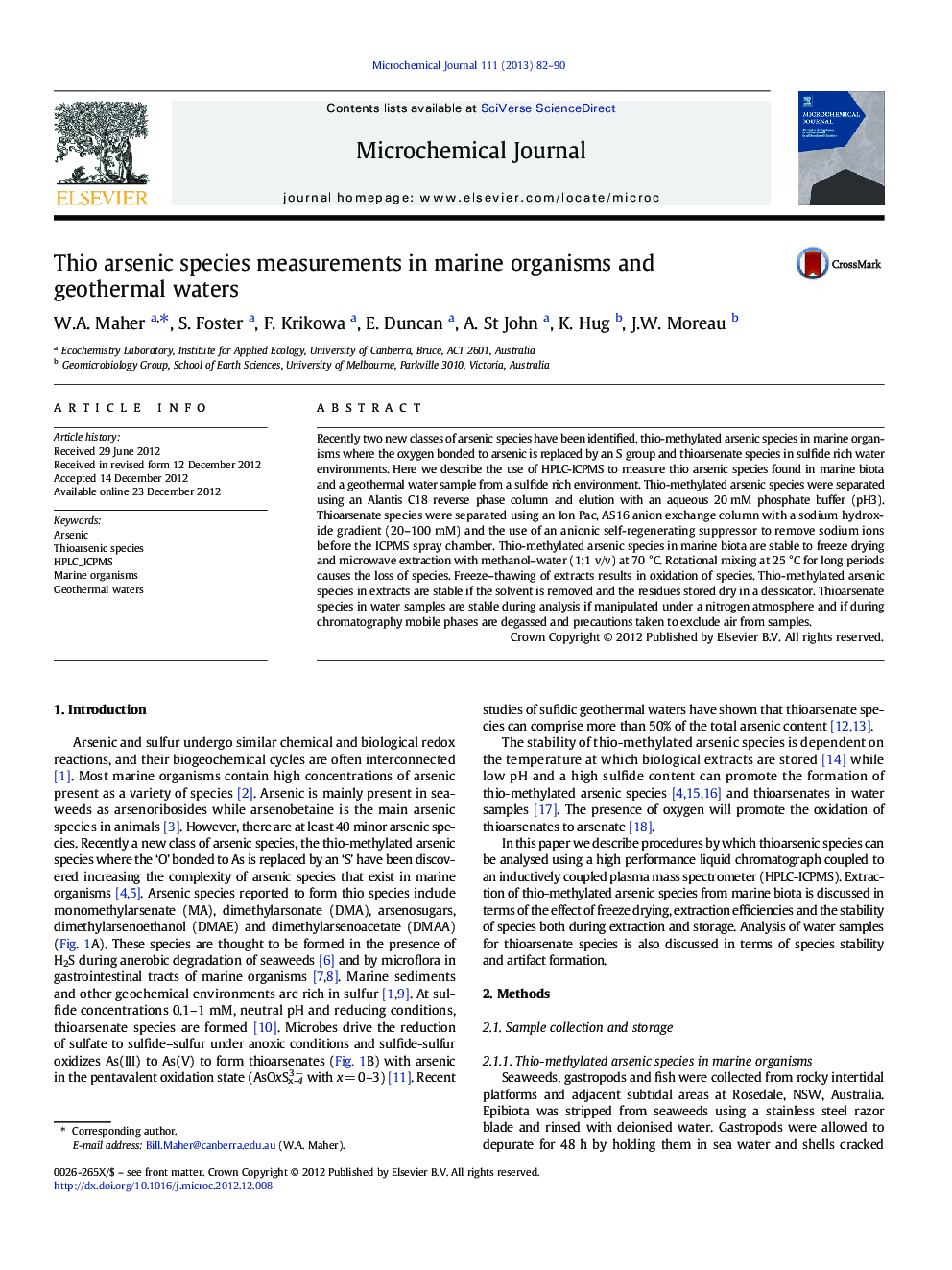| Article ID | Journal | Published Year | Pages | File Type |
|---|---|---|---|---|
| 1227804 | Microchemical Journal | 2013 | 9 Pages |
Recently two new classes of arsenic species have been identified, thio-methylated arsenic species in marine organisms where the oxygen bonded to arsenic is replaced by an S group and thioarsenate species in sulfide rich water environments. Here we describe the use of HPLC-ICPMS to measure thio arsenic species found in marine biota and a geothermal water sample from a sulfide rich environment. Thio-methylated arsenic species were separated using an Alantis C18 reverse phase column and elution with an aqueous 20 mM phosphate buffer (pH3). Thioarsenate species were separated using an Ion Pac, AS16 anion exchange column with a sodium hydroxide gradient (20–100 mM) and the use of an anionic self-regenerating suppressor to remove sodium ions before the ICPMS spray chamber. Thio-methylated arsenic species in marine biota are stable to freeze drying and microwave extraction with methanol–water (1:1 v/v) at 70 °C. Rotational mixing at 25 °C for long periods causes the loss of species. Freeze–thawing of extracts results in oxidation of species. Thio-methylated arsenic species in extracts are stable if the solvent is removed and the residues stored dry in a dessicator. Thioarsenate species in water samples are stable during analysis if manipulated under a nitrogen atmosphere and if during chromatography mobile phases are degassed and precautions taken to exclude air from samples.
► Hyphenated HPLC-ICPMS system are described to measure thio-methylated arsenic and thioarsenate species. ► Freezing of samples preserves thioarsenic species. ► Extraction of thio-methylated species from tissues is quantitative using methanol-water (2:1 v/v) at 70 °C. ► Thio arsenic species atertable if oxygen is excluded and acids are not used in the analytical process.
